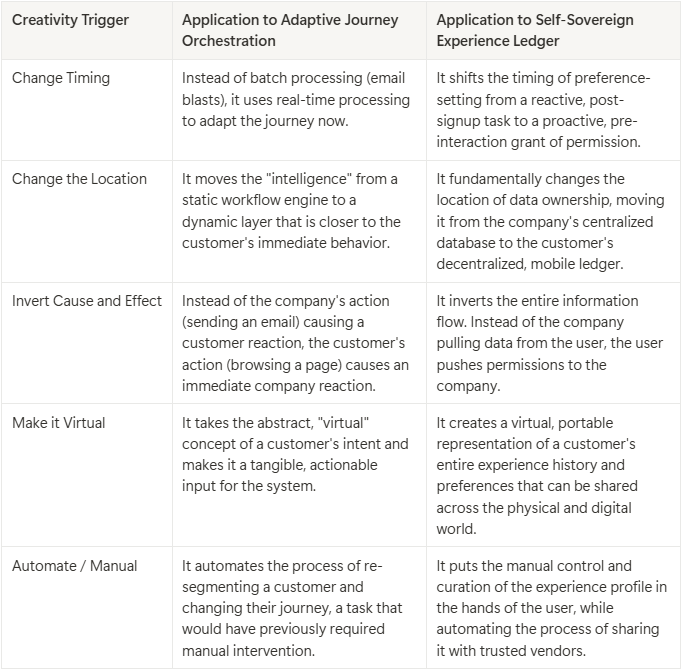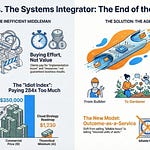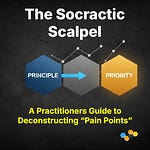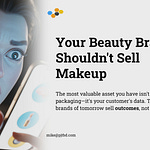Introduction: The Innovation Paradox in a Mature Market
Let's talk about CRM. For most businesses, it’s the heart of their customer operations—a vast, complex, and expensive system of record. It’s also a market that, from the outside, can look incredibly stagnant. The big players are entrenched, the core features are commoditized, and the fundamental promise has remained unchanged for decades: know your customer.
When we look for innovation, our eyes are naturally drawn to the disruptors—the startups swinging for the fences with a completely new model designed to tear down the old one. And while that’s happening in pockets of the ecosystem, it’s not the reality for the vast majority of businesses. If you’re an established company, you’re not going to rip out your entire CRM infrastructure overnight. The switching costs are monumental, not just in dollars, but in organizational pain. The reality for incumbents is that they are far more likely to gravitate toward practical, incremental changes that build upon their existing platforms and processes.
This creates an innovation paradox. How do you achieve breakthrough results when you’re constrained to an incremental path? How do you create genuinely new value when you’re building on top of a legacy foundation?
The answer, I believe, lies in shifting our perspective. It requires us to stop focusing on the tool (the CRM) and start focusing obsessively on the Job-to-be-Done. It requires us to elevate the level of abstraction—to move beyond the micro-tasks of managing data and think about the higher-order goal our customers are hiring us to help them with.
This post is a roadmap for that journey. We're not going to talk about ripping and replacing. We're going to outline a practical, two-step path to meaningful innovation within the CRM ecosystem. First, we’ll explore a powerful concept that is already working today for market leaders but remains tragically underutilized by the masses. Then, we’ll look over the horizon to a truly novel approach that has the potential to fundamentally change our relationship with customers forever. This is a guide for moving from a glorified digital rolodex to a dynamic engine for growth.
The Real Job: Moving from Managing Data to Orchestrating Journeys
If you ask a hundred sales or marketing professionals what their CRM is for, you’ll get a hundred variations of the same answer: it’s for managing customer relationships. It’s a database of contacts, a history of interactions, a pipeline tracker. But these are all descriptions of the solution. They are tasks we perform with the tool. They are not the fundamental Job-to-be-Done.
To find the real job, we have to ask why. Why do we need to manage contacts? Why do we track interactions? The answer isn't just to be organized. The ultimate goal, the higher-order job that every business is trying to accomplish, is this:
Create a personalized customer experience to foster loyalty and growth.
That’s it. That’s the real job.
We don’t want a contact record just to have it; we want it so we can address the customer by their name and understand their history. We don’t want to log a support ticket just for posterity; we want to know about their past struggles so we can provide better service in the future. We don’t track a sales pipeline just to create reports for management; we do it to understand where a customer is in their decision-making process so we can provide the right information at the right time.
Every feature, every function, every data point inside a CRM is, or at least should be, in service of that one, singular job: making the customer feel seen, understood, and valued as an individual.
Deconstructing the Job: What Does "Personalize the Experience" Really Mean?
Like any big, important job, "personalize the experience" has multiple dimensions. It’s not just about one thing; it’s a composite of functional, emotional, and social needs.
The Functional Dimension: This is the most obvious part of the job. It’s about efficiency and effectiveness. From a customer's perspective, this means:
"Don't make me repeat myself. You should know who I am and what I've done with you before."
"Show me that you understand my context. Are you sending me information that is relevant to my industry, my role, my past purchases, my current problems?"
"Anticipate my needs. Help me get to the next logical step without me having to figure it all out on my own."
"Make it easy for me. Reduce the friction in my journey, from finding information to making a purchase to getting support."
The Emotional Dimension: This is where loyalty is truly forged. It’s about how the interaction makes the customer feel.
"I want to feel confident in my decision. Give me the information and reassurance I need to feel like I'm making the right choice."
"I want to feel understood and valued, not like another number in your database."
"Reduce my anxiety. The buying process, especially for complex products, can be stressful. Make me feel like you're a trusted guide."
"I want a sense of security. I need to trust that you're handling my data responsibly and have my best interests at heart."
The Social Dimension: This dimension relates to how the customer wants to be perceived by others (their colleagues, their boss, their industry peers) as a result of interacting with you.
"I want to look smart and competent. By choosing your product or service, I want to be seen as someone who makes good decisions."
"Be seen as a hero within my own organization. Your solution should help me achieve results that get me recognized."
"I want to connect with a community of my peers. Help me feel like I'm part of a group of forward-thinking professionals."
When we see the job through this multi-dimensional lens, the limitations of most current CRM implementations become painfully clear.
The Universal Struggle: Why Your CRM Feels Like a Data Graveyard
The core problem is that most CRMs are designed and used as passive systems of record, not active engines of personalization. They are brilliant at storing data, but they often fail spectacularly at helping us use that data to get the real job done. This leads to a set of universal struggles:
The Struggle of Static Data: The most common form of "personalization" is using a first-name token in an email. But the customer's name is the least interesting thing about them. We define rigid personas—"Marketing Mary" or "Startup Steve"—and lock customers into these buckets. The system treats them the same on Day 100 as it did on Day 1, even if their needs, intent, and context have completely changed. The data becomes a static snapshot of the past, not a dynamic reflection of the present.
The Struggle of Siloed Information: The customer's "experience" doesn't happen in one department. They interact with marketing content, talk to sales reps, file support tickets, and use the product. Yet, in many organizations, the data from these interactions lives in separate systems. The marketing automation platform doesn't talk to the helpdesk, which doesn't talk to the product analytics tool. The result? The customer is forced to repeat themselves constantly, and no one has a complete picture. We're not personalizing an experience; we're personalizing a series of disconnected emails.
The Struggle of Reactive Automation: We've all built them: complex workflows that say, "IF customer does X, THEN send email Y." This is reactive. It's a pre-programmed response to a known trigger. It lacks any sense of genuine intelligence or adaptation. It can't handle ambiguity or anticipate a need the customer hasn't explicitly signaled. It's the illusion of personalization without the substance.
These struggles turn our expensive, powerful CRMs into little more than digital data graveyards. We spend enormous effort collecting and burying information, but we struggle to resurrect it in a way that creates a living, breathing, personalized experience for our customers.
The good news is, there is a path out.
An Incremental Path to Innovation
For the incumbent business, the path forward isn't about demolition. It's about strategic renovation. It's about finding the highest-leverage points in your existing structure and applying new thinking and technology to them.
This path has two major milestones. The first is about mastering the capabilities that are available right now—the powerful tools that market leaders are already using to create a competitive advantage. The second is about preparing for the next paradigm shift—a novel approach that will redefine the very nature of personalization.
Let's walk the path.
What's Working Today (But Underutilized): Adaptive Journey Orchestration
The first, and most critical, step on the path to meaningful CRM innovation is to move from the world of static, pre-programmed automation into the world of real-time, adaptive orchestration. This isn't a futuristic dream; it's a capability that is being actively developed and deployed by market leaders today. And for most businesses, it represents the single biggest opportunity for a step-change improvement in how they get the personalization job done.
The Core Concept: From Pre-Programmed to Real-Time
At its core, Adaptive Journey Orchestration is about one thing: recognizing and acting on customer intent in the moment.
It’s the difference between a map and a GPS.
A traditional marketing automation workflow is like a printed map. It lays out a fixed route based on a pre-defined plan. "If the user is in Segment A, they get this three-email sequence. If they click link B, they move to workflow C." It's rigid. If the user's needs change mid-journey, the map is useless. It can't re-route.
Adaptive Journey Orchestration is a GPS. It has a destination in mind (helping the customer get their job done), but it is constantly recalculating the best path based on real-time data. It observes the customer's behavior—the pages they're visiting right now, the content they're downloading, the features they're using, the questions they're asking a chatbot—and it adapts the entire experience on the fly.
This means the concept of a static "persona" is replaced by a fluid, dynamic profile. The system is constantly updating its understanding of the customer's immediate context and intent. It's not about what bucket they were put in last month; it's about what job they are trying to get done in this very session.
How It Gets the Job Done Better
Adopting this adaptive approach delivers a profoundly better solution to the core job of "personalizing the customer experience" across all three dimensions:
Functionally, it eliminates the biggest sources of friction. The customer no longer has to fight against an outdated persona. The system recognizes their change in intent and immediately provides relevant information. It makes the experience feel seamless and intelligent.
Emotionally, it makes the customer feel seen and understood. When a website or an app adapts to your behavior in real-time, it creates a powerful feeling of being listened to. It replaces the anxiety of "am I in the right place?" with the confidence of "this company gets me."
Socially, it equips the customer with the right information at the moment of need, making them look more competent and prepared in their own work. It helps them make better, faster decisions, which enhances their own professional standing.
Pioneers in the Field: Who Is Doing This Now?
This is not science fiction. This capability is the central battleground for the biggest players in the customer experience space. While the technology is complex, the goal is the same: unify customer data to enable in-the-moment personalization.
Thunderhead: The Visionary of Customer-Managed Journeys
Long before it became a mainstream buzzword, the UK-based company Thunderhead was a visionary in this space. Their entire philosophy, embodied in their ONE platform, was built around the idea of real-time journey orchestration. They were one of the first to truly evangelize the concept of listening to customer signals across all touchpoints (web, mobile, call center) and using that real-time understanding to guide the customer on an individualized path.
Thunderhead's core innovation was to build a "listening" layer that could sit across a company's existing technology stack. It could see a customer browsing the website, see that they just called the contact center, and see their recent purchase history from the e-commerce platform. By stitching this information together in real time, their platform could make intelligent decisions about the "next best conversation" for that specific customer, at that specific moment. They proved that it was possible to move beyond siloed, channel-specific automation to true cross-channel, adaptive journeys. Their early work laid the conceptual foundation that the rest of the industry is now racing to build.
Salesforce: The 800-Pound Gorilla Chases Real-Time
For years, Salesforce was the quintessential system of record. It was the database, the source of truth for customer data. But that data was often latent—it was used for reports and planning, not for in-the-moment action. The company's massive investment in its Data Cloud (previously known as Customer Data Platform or CDP) represents a strategic pivot to address this very problem.
The entire purpose of the Salesforce Data Cloud is to solve the data silo struggle. It's designed to ingest data from every conceivable source—the core CRM, marketing tools (Marketing Cloud), e-commerce platforms (Commerce Cloud), service desks (Service Cloud), and even external data sources—and unify it into a single, real-time profile for each customer.
With this unified profile, Salesforce enables the kind of adaptive orchestration we're talking about. A sales rep can see that their prospect is on the website right now looking at the pricing page. A marketing journey can be instantly altered because the customer just filed a high-priority support ticket. The goal is to make the entire Salesforce ecosystem "smarter" by feeding it with real-time, cross-channel data, allowing for more intelligent and adaptive interactions.
Adobe: The Content King's Bet on Context
While Salesforce comes from a CRM-first world, Adobe approaches the problem from a content-and-analytics-first perspective. Their strength has always been in understanding how customers interact with digital experiences. Their investment in their Real-Time CDP and the broader Adobe Experience Platform is their strategic move to dominate adaptive personalization.
Adobe's thesis is that the key to personalization is context. By combining a customer's historical data with their real-time behavioral data (what they are clicking on, what they are searching for), Adobe can build an incredibly rich, up-to-the-second profile. This profile can then be used to personalize every touchpoint.
For example, if a user arrives on a retail website, Adobe's platform can instantly recognize them, pull their purchase history, see that they recently abandoned a cart, and observe that they are currently browsing from a mobile device in a specific geographic location. All of this data is used in milliseconds to customize the content of the homepage, the offers they see, and the product recommendations they receive. It’s a powerful demonstration of using a deep, real-time understanding of the customer to get the personalization job done at an incredibly high level.
A Practical Example in Action
Let's make this concrete. Imagine a B2B software company.
The Old Way (Pre-Programmed Automation):
A user, "Jane," downloads a whitepaper on "Introduction to Project Management."
She is put into the "Beginner PM" persona bucket.
She receives a pre-scheduled, 5-part email nurture sequence over two weeks, explaining the basic features of the software.
A week later, Jane's boss asks her to evaluate enterprise-grade tools. She visits the software company's website and spends 20 minutes reading the "Enterprise Security" and "API Integration" pages.
The system doesn't notice. The next day, she receives email #4 of the beginner sequence, "Tip #4: How to Create Your First Task!" It's completely irrelevant and makes the company look like it isn't paying attention. This is a moment of high friction.
The New Way (Adaptive Journey Orchestration):
A user, "Jane," downloads the same whitepaper.
The system tentatively flags her as having "Beginner PM" intent.
A week later, she visits the website and browses the enterprise pages.
The adaptive platform's "listening" capability sees this behavior in real time. It instantly updates her profile. Her "intent score" for "Enterprise Buyer" skyrockets.
The system automatically and immediately pulls her from the beginner email nurture.
The very next interaction is adapted. A chatbot on the website that was silent before now pops up with a message: "I see you're interested in our enterprise features. Can I connect you with a security specialist who can answer your questions about API integration?"
The next morning, instead of the beginner email, she receives a case study about how a Fortune 500 company in her industry uses their enterprise plan.
The difference is night and day. In the second scenario, the company has perfectly addressed the functional job ("give me relevant information") and the emotional job ("show me you understand my needs"). This is the power of adaptive orchestration, and it's the standard we should all be striving for today.
What's Next on the Horizon (A Novel Approach): The Self-Sovereign Experience Ledger
Mastering adaptive orchestration is the critical first step. But if we elevate the level of abstraction even higher, we can begin to see the shape of the next great leap in personalization.
If today's best practice is for the company to get better at inferring our needs from our data, the next paradigm is about giving control of that data to the customer. This is a concept I call the Self-Sovereign Experience Ledger.
The Core Concept: Inverting the Power Dynamic
For the last thirty years, the relationship between customers and companies has been an adversarial one when it comes to data. Companies try to collect as much as they can, and customers try to protect as much as they can. The entire model is based on the company owning the customer's data and using it (for better or worse) to drive its own objectives.
The Self-Sovereign Experience Ledger inverts this model completely.
Imagine a secure, personal data store that is owned and controlled entirely by you, the customer. Think of it like a digital passport for your preferences, your history, and your rules of engagement. It contains everything a company would need to know to provide you with a perfect experience:
Your Profile Data: Your preferred name (not your legal name), your contact information, your shipping addresses.
Your Communication Preferences: "My preferred contact method is SMS. Only contact me between 9 AM and 5 PM on weekdays. Never call me."
Your Interest Graph: "My current primary interests are sustainable travel, vintage cameras, and productivity software. I am no longer interested in cryptocurrency or fast fashion."
Your Ad Preferences: "Never show me ads for gambling or alcohol. Feel free to show me ads for airlines and hotels."
Your Interaction History: A log of your purchases, support tickets, and key interactions across all companies you choose to include.
This ledger is yours. You own it. You control it. Companies don't get to scrape it or build it without your permission. Instead, you grant them permission—perhaps temporary, perhaps revocable—to read from your ledger and use it to tailor your experience.
How It Gets the Job Done Completely Differently
This approach doesn't just get the personalization job done better; it gets it done in a completely different way, with a different job performer and a different value equation.
It Gets the Job Done Perfectly: Today's adaptive systems are based on inference. They are making an educated guess about your intent. An Experience Ledger is based on ground truth. The personalization is perfect because you are the one defining the parameters. There is no guesswork.
It Eliminates Redundancy: Think about how many times you have entered your name, address, and preferences into different websites and apps. It's an absurdly redundant task. With a ledger, you do it once. You define your experience rules in one place, and then you grant access to the companies you trust. This gets the job of "setting up my profile" done with infinitely less effort.
It Shifts the Burden of Complexity: Right now, companies spend billions of dollars on complex CDP and data unification technologies to try and piece together a 360-degree view of the customer. An Experience Ledger outsources this job to the only person who has a true 360-degree view: the customer themselves. The customer manages their own data, which dramatically simplifies the technology stack required by the company. The company's job is no longer to be a data detective; it's to be a respectful and responsive service provider.
It Builds Trust by Default: The current model is trust-deficient. The Experience Ledger model is trust-first. By giving the customer ownership and control, it fundamentally reframes the relationship as a partnership rather than an adversarial extraction.
Unpacking the "Experience Ledger": How Would It Work?
This might sound futuristic, but the technological and conceptual building blocks are already emerging.
Identity: The concept of "Self-Sovereign Identity" (SSI) is a growing movement in the blockchain and decentralized web (Web3) space. The idea is to give individuals control over their own digital identity, rather than having it managed by large corporations like Google or Facebook. An Experience Ledger would be a natural extension of an SSI wallet, adding a layer of preference and experience data to the core identity data.
Data Portability: Regulations like GDPR have already introduced the "right to data portability," giving consumers the right to request their data from a company in a machine-readable format. An Experience Ledger is the logical endpoint of this trend: instead of having to request your data, you simply own it from the start.
Permissions and Smart Contracts: The mechanism for granting access would likely be based on cryptographic principles, similar to connecting a crypto wallet to a decentralized application (dApp). A user could grant a company read-only access to specific parts of their ledger for a specific period. These permissions could even be encoded in a smart contract, creating an automated and trustless agreement about how the data can be used.
The business model for the companies that build these ledgers would be centered on providing security, ease of use, and a seamless interface for the user. They wouldn't be selling the user's data; they would be selling the user a tool to manage and leverage their own data.
A Practical Example in Action
Let's revisit Jane, our B2B software buyer.
Jane is looking for a new project management tool. She visits the website of a company she's never interacted with before.
Instead of a "Sign Up" button, she sees a "Connect with Experience Ledger" button.
She clicks it. A pop-up from her Ledger provider (let's call it "MyLedger") appears, asking for her permission. It says: "https://www.google.com/search?q=ProjectTool.com is requesting read-only access to your Profile Data and your Professional Interests for this session. [Allow] [Deny]"
Jane clicks "Allow."
The website instantly transforms. It's not just a generic homepage. The headline reads, "Welcome, Jane. The Project Management Tool for Enterprise Marketing Teams." The system knows her name, and it knows from her ledger that her role is in marketing and her interest is in enterprise-grade tools.
The case studies featured on the homepage are all from other marketing teams. The pricing page defaults to showing the "Enterprise" plan.
A chatbot appears: "Hi Jane. I see you're interested in tools that integrate with Salesforce and Adobe Experience Manager. Would you like to see a 2-minute demo of how our integration works?" The chatbot knows her preferred tech stack because it's listed in her ledger.
In this scenario, the company has done zero guesswork. They haven't had to buy a CDP or build complex inference models. They simply had to build a system that could respectfully ask for permission, read the data provided, and act on it. Jane, in turn, has had a perfectly frictionless and relevant experience from the very first second. The job of "personalize my experience" has been achieved at a level of fidelity that is simply impossible with today's company-centric model.
Bringing the Concepts to Life: Using Creativity Triggers
How do we come up with concepts like Adaptive Orchestration or the Experience Ledger? We can use structured creativity frameworks, like the Innovation Matrix, to push our thinking. By applying different "triggers," we can deconstruct a problem and find novel ways to solve it.
Here’s how some of these triggers apply to the concepts we’ve discussed:
This structured approach helps ensure we’re not just brainstorming random ideas, but are systematically exploring different vectors for innovation.
Conclusion: Your Path from Data Janitor to Experience Architect
The CRM industry is not stagnant; it’s maturing. And in mature markets, the opportunities for innovation don't come from chasing the same old feature sets. They come from elevating our thinking and refocusing on the real Job-to-be-Done.
For too long, we have been acting like data janitors, diligently collecting and storing information in the hopes that it might one day be useful. The path forward requires us to become experience architects, using that data to build dynamic, responsive, and genuinely personal journeys for our customers.
We’ve laid out a clear, two-step path for this transformation:
Master the Present: Embrace Adaptive Journey Orchestration. This is the new table stakes. Invest in the technology and the mindset to listen to your customers in real time and adapt to their intent. Move beyond the static, pre-programmed workflows of the past and start delivering the intelligent, relevant experiences that leaders like Salesforce and Adobe are already building. This is the single most powerful, incremental step you can take right now to get the personalization job done better.
Prepare for the Future: Begin to understand and evangelize the concept of the Self-Sovereign Experience Ledger. This is the paradigm shift on the horizon. The move from company-owned data to customer-owned data will be as transformative as the move from on-premise software to the cloud. The companies that start building the trust, the technology, and the mindset to operate in this new world will be the dominant players of the next generation.
This journey from data janitor to experience architect is not easy. It requires a shift in technology, process, and culture. But the goal is clear, the path is practical, and the prize is immense: moving beyond a simple system of record to become a true engine for customer loyalty and business growth.
A Question for You
We've talked about a future where you, the customer, have total control over your data and how companies interact with you. This is a big shift from the world we live in today.
So, my question is this: How much control would you want over your own customer data and experience? Are you ready for a Self-Sovereign Experience Ledger, or do you see potential downsides?
Share your thoughts in the comments below. I’d love to hear your perspective.
Follow me on 𝕏: https://x.com/mikeboysen
If you'd like to see how I apply a higher level of abstraction to the front-end of innovation, please reach out. My availability is limited.
Mike Boysen - www.pjtbd.com
Why fail fast when you can succeed the first time?
My Blog: https://jtbd.one
📆 Book an appointment: https://pjtbd.com/book-mike
Join our community: https://pjtbd.com/join













